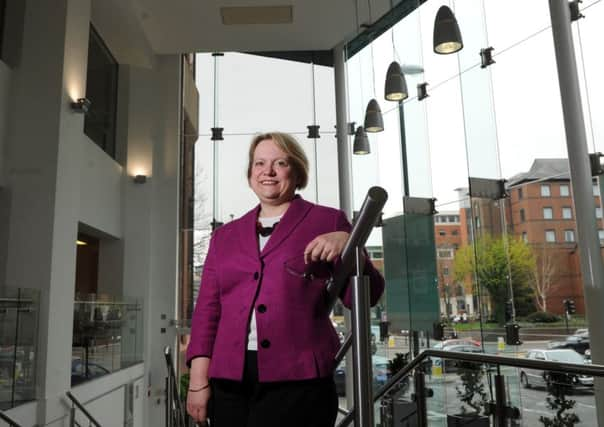Juliette Healey: How the Bank of England can lay foundations for future prosperity


Indeed, evidence from a range of measures that the Bank looks at suggests uncertainty has been higher than normal since June’s referendum on the UK’s membership of the European Union.
Yet, despite that, the economy has continued to perform more strongly than many–including the Bank of England – had expected.
Advertisement
Hide AdAdvertisement
Hide AdFor some contacts I talk to – especially at smaller companies – this will come as little surprise: many of them are simply getting on with doing business for the time being.
The same can be said of many households. After all, unemployment levels are low – here in Yorkshire more people are in work than ever before – and wages are growing modestly, but faster than inflation.
For many of those looking to borrow, credit is readily available and competitively priced.
Recent growth has been supported by a package of measures introduced by the Bank of England’s Monetary Policy Committee (MPC) in August, including a small cut in interest rates which has reduced mortgage repayments for many households.
Advertisement
Hide AdAdvertisement
Hide AdThe low cost and good availability of mortgages has also supported activity in the housing market, which has proved more resilient than expected, especially outside London.
Businesses have also seen the cost of borrowing fall. But they will typically only invest if they are confident about the outlook. And some tell us they remain quite cautious.
A survey of our contacts published with our latest Agents’ Summary of Business Conditions suggests investment spending will likely be broadly stable or slightly lower in the year ahead, after quite a significant increase over the past 12 months. And the uncertainty word figures prominently in our report.
Uncertainty about the demand outlook was the biggest drag on investment plans, particularly in manufacturing and construction.
Advertisement
Hide AdAdvertisement
Hide AdAnd uncertainty about future trading arrangements was the other main negative factor, especially for manufacturers.
The drop in the value of the pound over recent months at least partly reflects concerns in financial markets about the same issue.
It was a key theme of the MPC’s latest Inflation Report, which was published on Thursday 3 November.
The MPC’s growth forecast for next year is stronger than that set out back in August, reflecting the economy’s robust recent performance. But the outlook for 2017 and 2018 is weaker, partly because the lower value of the pound will make imports more expensive. This is expected to push up prices, which will weigh on consumer spending growth.
Advertisement
Hide AdAdvertisement
Hide AdFaced with a period of inflation above its 2 per cent target, the Bank might be expected to increase interest rates. But that period will be temporary.
And it is expected to happen alongside modest growth and rising unemployment. The Bank has therefore decided to leave its interest rate unchanged at 0.25 per cent.
But it has said that policy could respond in either direction, depending on how inflation and growth prospects develop.
As this story unfolds, the reports the MPC hear from our Agency contacts are vital.
Advertisement
Hide AdAdvertisement
Hide AdIn uncertain times, what can the Bank of England do? It is true that our policies alone can’t deliver prosperity, but we can lay the foundations for it.
By targeting sustainable, low inflation, we aim to smooth the process of adjustment,